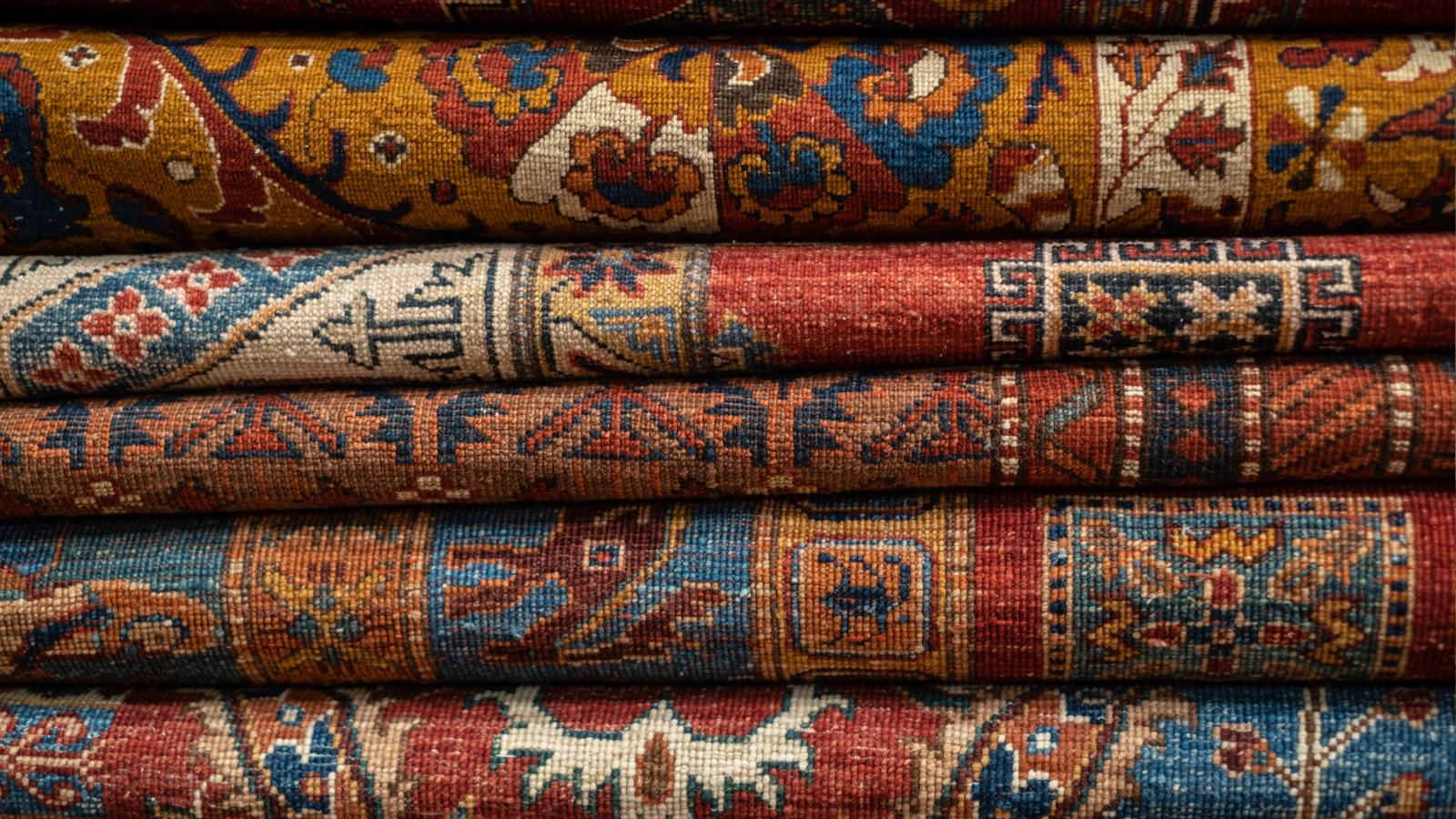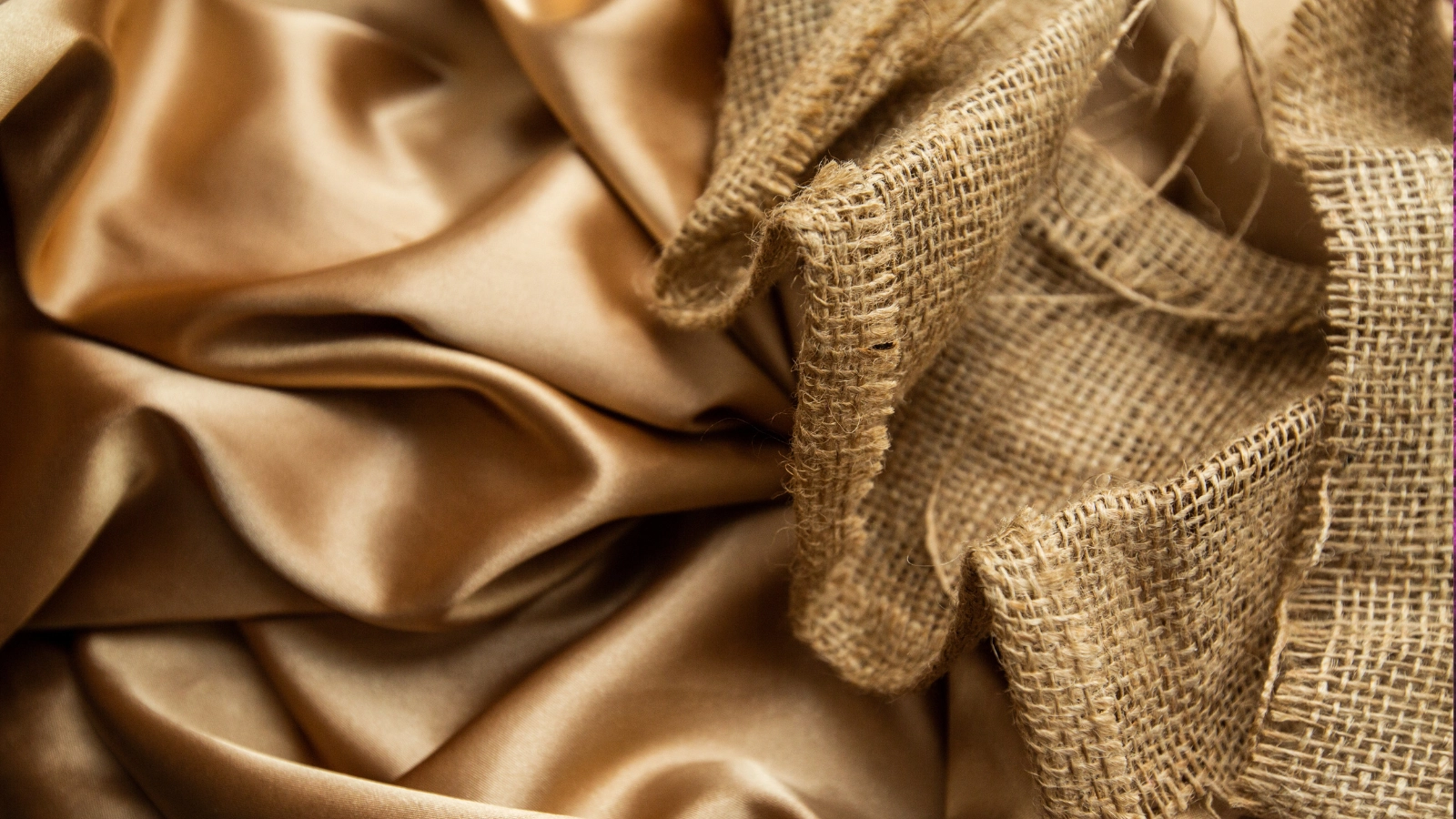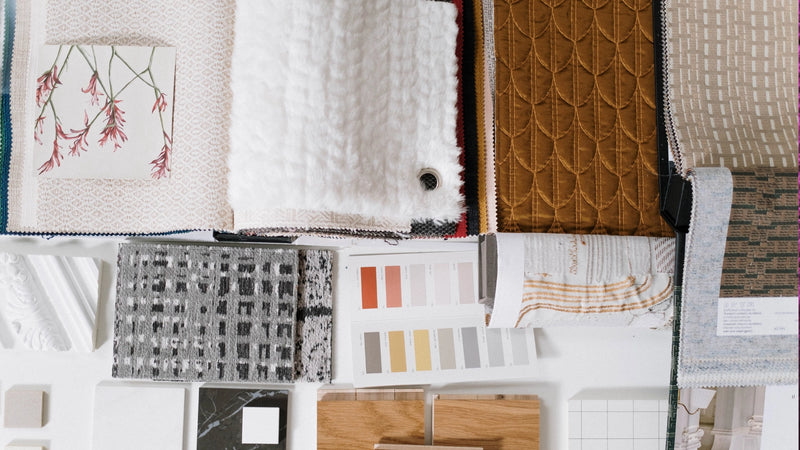Woven fabrics are a cornerstone of the textile industry. They offer a wide array of textures, patterns, and functionalities. Created through the interlacing of threads, these materials are classified into various types. Each type has unique characteristics and applications.
From denim to chiffon, understanding the different woven fabric types is essential. Let's explore the woven fabrics that define today's most important textile structures.
Key Takeaways
- Plain weave fabrics like muslin and canvas feature simple interlacing patterns. They're versatile for everyday use.
- Twill weave fabrics include denim and gabardine. They have distinctive diagonal patterns that enhance durability and appearance.
- Satin weave creates smooth, lustrous surfaces with minimal yarn intersection. They're ideal for formal and luxury garments.
- Jacquard weave produces complex patterns and designs. They're commonly used in decorative upholstery and special occasion clothing.
Woven Fabric Types: Common Weaving Techniques

Weaving is making fabric by interlacing two sets of threads at right angles. Here are some common weaving techniques:
- Plain Weave: This is the simplest and most common weaving technique. The weft thread crosses over and under each warp thread alternately. It creates a strong, durable fabric.
- Twill Weave: Twill weave has distinctive diagonal lines on the fabric surface. It involves passing the weft thread over one or more warp threads and then under two or more. This pattern is staggered in each row.
- Satin Weave: Satin weave is well-known for its smooth, shiny surface. Its high number of weft threads floating over warp threads or vice versa results in fewer interlacings.
- Basket Weave: This is a variation of the plain weave. It uses two or more warp threads interlaced with the same number of weft threads, creating a checkerboard effect.
- Herringbone Weave: This is a variation of twill weave. Herringbone features a zigzag pattern that resembles a broken twill weave.
- Jacquard Weave: This complex technique creates intricate patterns using a special loom. Each thread is individually controlled, allowing for elaborate designs.
- Leno Weave: In Leno weave, pairs of warp threads are twisted together before the weft thread is added. This forms an open, mesh-like fabric.
- Dobby Weave: This technique uses a dobby loom to create small, geometric patterns and textures in the fabric.
Different Types of Woven Fabrics

Now, let's look at some of the most common types of woven fabrics and their unique characteristics.
1. Buckram
Buckram is a specialized plain-woven fabric engineered for structural support. This cotton-based material commonly reinforces collars, cuffs, and bags. Its stiff nature proves invaluable.
The fabric's plain construction delivers exceptional durability and resistance to fraying. Meanwhile, specialized treatments enhance its rigidity and water-resistant properties.
2. Cambric
Cambric is a lightweight, closely woven, plain cotton cloth. It's celebrated for its smooth texture and versatility. Its soft finish makes it ideal for delicate garments like shirts, handkerchiefs, and children’s wear.
The fine weave of cambric ensures a polished appearance. Meanwhile, its breathable nature offers comfort. Additionally, the fabric often undergoes slight finishing processes to enhance its sheen and durability.
3. Casement
Casement fabric is a lightweight, plain-woven material known for its fine texture and versatility. Crafted from cotton, polyester, or blends, it's used for curtains, drapery, and upholstery.
The smooth weave of casement allows light to filter through while offering privacy. Its durability and ease of maintenance make it a popular choice for home furnishings.
4. Cheese Cloth
Lightweight and versatile, cheesecloth features a distinctive plain-weave construction. It has an intentionally loose, open structure that allows for maximum breathability.
The lightweight open cloth excels in culinary tasks. It effectively strains liquids and wraps food. Its sheer construction makes it equally valuable for crafts and decorative projects.
5. Chiffon
Chiffon is a lightweight sheer fabric constructed from twisted yarns. It typically uses silk, nylon, or polyester fibers. Its distinctive manufacturing process produces a delicate appearance. This makes the fabric suit evening wear and bridal applications.
The fabric's ethereal nature makes it ideal for layered designs. But you'll often encounter it paired with sturdier materials for structural support.
6. Chintz
This plain fabric undergoes specialized treatment with starch or glazing agents. This enhances its durability and creates its characteristic shine.
Chintz's breathable nature makes it versatile for both fashion and interior applications. Its surface readily accepts vibrant floral patterns and colorful designs. However, to prevent fading, you'll need to protect it from prolonged sun exposure.
7. Corduroy
Corduroy has distinctive parallel raised ridges called wales. It features a cut pile weave construction that creates its signature textured appearance. This weaving technique provides lateral stretch, enhancing comfort and wearability.
The fabric's structure incorporates varying wale counts, from wide to fine. This determines its texture and application versatility.
8. Crepe
Crepe fabric is popular for its distinctively puckered texture. This is created by a specialized weaving technique. It incorporates highly twisted yarns to make this crimped surface.
The unique twisting process results in a breathable, lightweight fabric. It's particularly sought after for its fluid drape.
Crepe's adaptability is evident in its various variants, from the delicate crepe de chine to the more substantial crepe back satin.
The fabric's natural flow and texture make it excellent for evening wear and sophisticated clothes.
9. Denim
Denim stands as an iconic twill-weave fabric. This fabric is made from sturdy cotton yarns that create its characteristic diagonal ribbing pattern.
Manufacturers mainly dye this durable twill fabric with indigo. This yields its signature blue appearance that's become a staple in casual wear.
Available in various weights, denim adapts to various applications. You can find it from lightweight summer clothing to robust outerwear.
10. Drill
Drill is a versatile twill-woven fabric known for its strength and durability. Made predominantly from cotton, this fabric is used in workwear, uniforms, and upholstery.
The diagonal weave pattern gives the drill its characteristic texture and enhances its resilience. Its tightly woven structure not only ensures longevity but also provides excellent resistance to wear and tear.
11. Flannel
Flannel is a comfort-focused textile with a distinctive brushed surface. This surface is created through a specialized napping process that raises fibers from the loosely woven base.
Light flannel versions work well for casual shirts. Heavier variants provide excellent insulation for winter wear and bedding.
Though traditionally associated with check patterns, modern flannel offers solid colors and diverse prints.
12. Gabardine
Gabardine features diagonal ribbing that enhances its structural integrity. It's another example of a durable twill fabric. The fabric's construction enables it to maintain shape while resisting wrinkles. It's ideal for structured clothes like suits and trousers.
Through specialized finishing processes, gabardine achieves water-resistant properties. This expands its versatility towards outdoor applications.
13. Georgette
Georgette is a plain fabric made from silk or synthetic fibers, particularly polyester. Its distinctive crinkled surface and lightweight construction make it sheer and fluid, with a grainy texture.
Georgette's exceptional draping qualities make it perfect for evening wear and sophisticated blouses.
14. Lawn
Lawn fabric presents a distinctly smooth and refined plain weave construction. This lightweight cotton or linen material features a semi-transparent quality. This makes it perfect for summer clothes.
Lawn fabric offers both durability and elegance when selecting material for dresses, blouses, or children's clothing.
15. Muslin
Muslin stands as one of the most versatile plain-weave cotton fabrics. This loosely woven material is available in unbleached, bleached, and colored variations.
Muslin is a testing material for fit and design validation in garment construction before cutting into expensive fabrics.
The material's filtration capabilities make it valuable in culinary applications. Its adaptable nature also supports embroidery projects and household textiles.
16. Organza
Organza's distinctive characteristics stem from its plain weave construction. It creates a lightweight yet crisp fabric that maintains exceptional transparency.
Organza is commonly used in formal wear, especially wedding dresses and evening gowns. It excels at creating dramatic overlays and sophisticated embellishments.
17. Poplin
Poplin delivers a more substantial yet still lightweight plain weave construction. Its distinctive 2:1 or 3:1 warp-to-weft ratio creates a smooth, crisp texture with a subtle sheen. In addition to cotton, poplin can incorporate synthetic fiber blends, enhancing durability and wrinkle resistance.
The fabric's structure guarantees excellent breathability. This makes it ideal for warm-weather clothes.
18. Taffeta
Taffeta is a precise plain weave fabric. It showcases a distinctive fine-ribbed texture. This fabric is commonly crafted from silk or synthetic alternatives. It features a lustrous finish that captures and
Taffeta's natural stiffness makes it perfect for structured designs. It helps evening gowns and formal attire maintain their shape.
The lightweight fabric allows for versatile applications in ball gowns and petticoats.
19. Velvet
Velvet stands as a premier woven fabric. It employs a double-weave technique to create its characteristic plush surface.
You'll find several types of fabrics within the velvet family. Each type offers distinct properties.
- Silk velvet delivers superior sheen and softness.
- Cotton variations provide durability at a more accessible price point.
- Crushed velvet features a deliberately textured appearance.
- Panne velvet exhibits a flattened, glossy finish.
These variations make velvet particularly versatile for both fashion and interior applications.
How to Care for Woven Fabrics
Caring for woven fabrics properly ensures their longevity and maintains their appearance. Here’s a straightforward guide:
Step 1: Check the Fabric Label
Always refer to the care label on your garment or fabric. It provides specific instructions, such as whether it needs to be hand-washed, machine-washed, or dry-cleaned.
Step 2: Washing Instructions
Lightweight Woven Fabrics (Cotton, Linen):
- Use cold or warm water to prevent shrinking or fading.
- Wash on a gentle cycle with mild detergent.
- Avoid overloading the washing machine to prevent damage.
Delicate Woven Fabrics (Silk, Wool):
- Hand wash in cold water using a gentle detergent.
- If using a washing machine, place the fabric in a mesh laundry bag and use a delicate cycle.
Heavy Woven Fabrics (Upholstery, Tweed):
- Spot-clean stains with a damp cloth and mild detergent.
- For large items, professional cleaning is better.
Step 3: Drying Tips
- Avoid wringing woven fabrics as they can distort the weave.
- Lay flat to dry for delicate fabrics to prevent stretching or sagging.
- For sturdier fabrics, tumble dry on low heat or hang them up.
- Avoid direct sunlight to prevent fading.
Step 4: Ironing and Pressing
- Use the appropriate heat setting (e.g., low heat for silk, higher heat for cotton).
- Use a pressing cloth to avoid direct contact with the iron.
- Steam woven fabrics lightly to remove wrinkles without flattening the texture.
Step 5: Storage
- Fold woven fabrics instead of hanging them to prevent stretching.
- Store in a cool, dry place to avoid mold, mildew, and pests.
- For delicate or expensive woven items, use acid-free tissue paper when folding.
By following these tips, you’ll preserve the quality and beauty of your woven fabrics for years!
Conclusion
Woven fabrics are vital to the textile industry. The interplay between warp and weft determines tensile strength, dimensional stability, and surface characteristics.
These fabrics showcase a wide range of types and techniques. They cater to various needs and preferences. Each type offers unique characteristics suited for different applications, from plain to dobby weaves.
Proper care for these fabrics ensures their longevity and maintains their aesthetic appeal. Thus, you can enjoy their beauty and functionality for years to come.
Learn more fabric knowledge on the Longan Craft Blog, and dive into the fabric world with Longan Craft!


0 comments